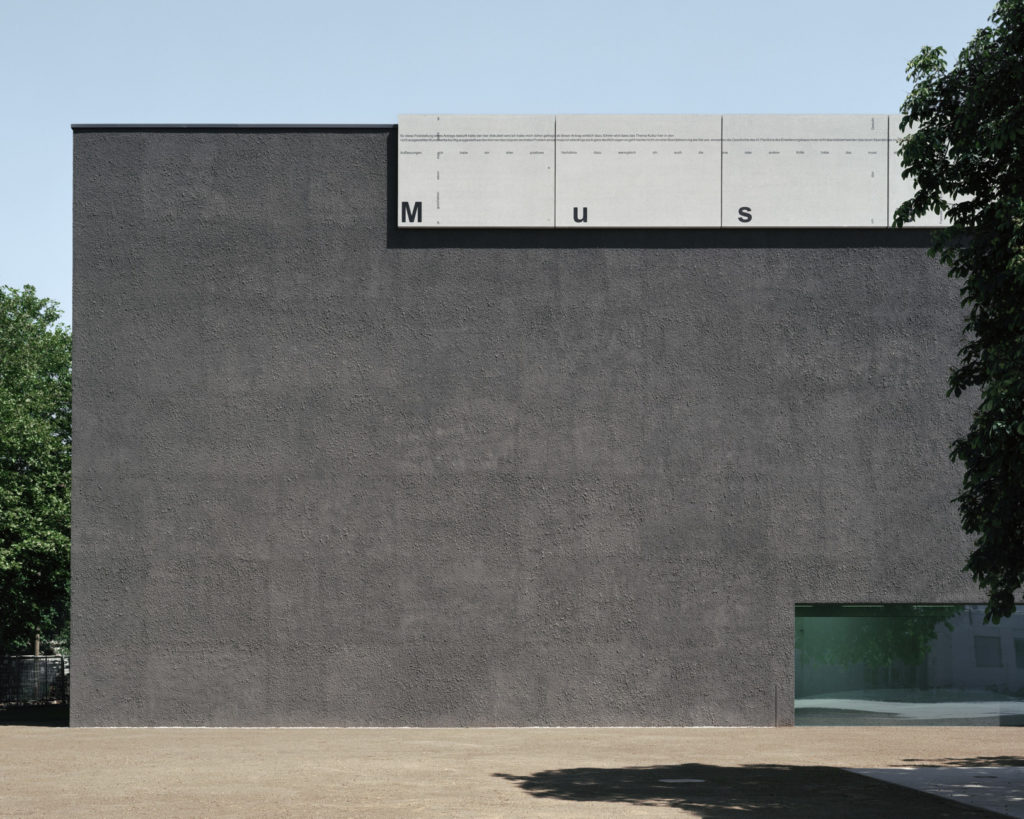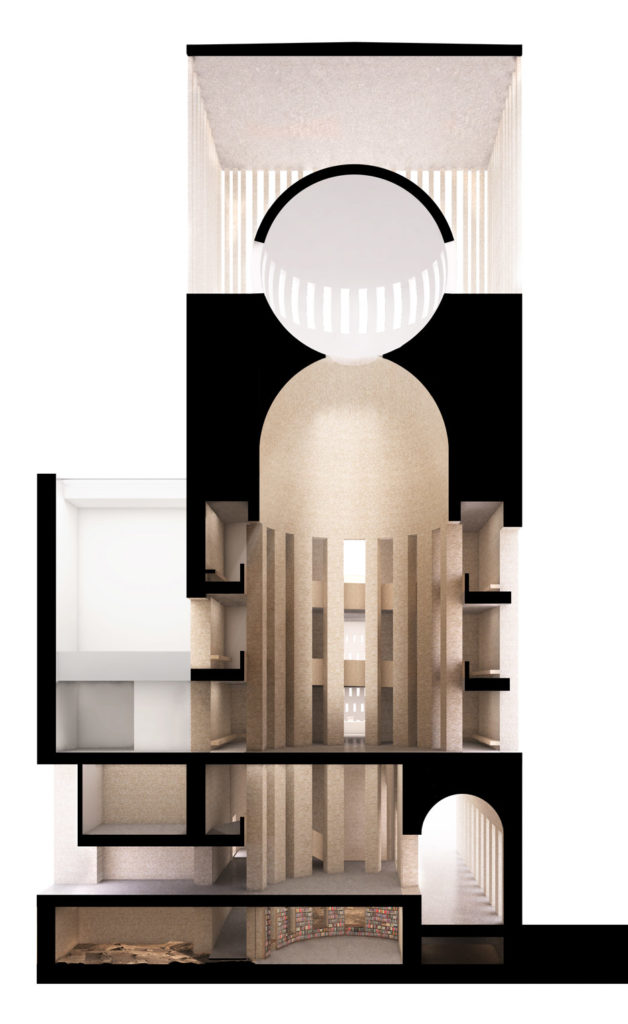This spring, Berlin-based architects Johannes Kuehn, Wilfried Kuehn, and Simona Malvezzi asked Harvard Graduate School of Design students to imagine a new kind of museum for the 21st century, one that acknowledges, even if it rejects, the history and structure of the modern museum. For this, Kuehn Malvezzi’s three principals connected the students with a client of sorts: German collector Julia Stoschek, who has been showing her private collection of performance and time-based art since 2007. Kuehn Malvezzi is not currently working with Stoschek, but the firm renovated a 1907 industrial building in Düsseldorf for part of her collection. Their work for curators, collectors, artists, and art institutions has constituted much of their portfolio since their founding in 2001. Last year, they converted the Prinzessinnenpalais on Berlin’s Unter den Linden Boulevard into a new cultural venue for Deutsche Bank’s considerable art collection. And they won the design competition for Montreal’s redesigned Insectarium, now under construction.
In an introduction to the visiting critics’ recent lecture at the GSD, Mark Lee, chair of the department of architecture, quoted Viennese essayist Hugo von Hofmannsthal, and related that von Hofmannsthal never felt any conflict “between the dark, serious, deeply moral Teutonic ideal, and the spritely, festive, Latin asceticism” of Vienna at the end of the 19th century. Kuehn Malvezzi’s work similarly grapples with combining playfulness and gravity. Their House of One project—a mosque, synagogue, and church under the same roof—will be built on the historic foundations of one of Berlin’s earliest churches, and they are collaborating with the artist Michael Riedel on a new facade for the Moderne Galerie in Saarbrücken, Germany. We spoke with Wilfried Kuehn about their studio and recent projects.

Why did you choose to focus on museology for your GSD studio?
Should the museum move away from the treasure house and toward a space where it’s not so much the precious object at the center, but rather the experience between visitors? We are now witnessing the fact that more and more private collectors have a lot of important work in storage and we have this huge amount of art that is not public. The class collaborated with collector Julia Stoschek, who owns the largest digital art collection in Germany and is expanding quite rapidly. She collects video and time-based media and shows them in Düsseldorf and Berlin. She’s very interested in the fact that the museum could become a space that is less driven by the objects. We interacted via Skype and then our students visited her in Berlin.
A project like this challenges the whole notion of fundamentalism. It’s risky to be avant-garde and not conform to the anxieties and darkest emotions available.
We challenged the students with conceptual art texts on the role of the museum in society, feminist discourse in the ’60s and ’70s, and art being an experience that is liberating and political, rather than just objectified. They surprised us with spaces we are not accustomed to seeing as art spaces.
The firm has a long tradition of working with artists and within the art world. Is that something you deliberately sought out?
We have been collecting art and working with artists on buildings, so our relations are manifold. I see in art not so much an addition to architecture as a tool and method to think about architecture. We have done many art and building projects where you can’t disentangle the two. This is something that architects don’t usually like to do, because it basically diminishes their role in many eyes. We have never thought about our role like this. We have always thought that the maximum experience is to come together with other arts. We think this is very contemporary once again because of the specialization that took place in the 20th century and the alienation of all the different fields of knowledge that need to be reassembled. And we have a good way forward with art and architecture.

Why do you think your entry for the House of One won the competition?
Our three sacred spaces are all on one level without being the same—they are three individual extruded shapes that come from the historical floor plan. They are equal but not the same. This was what the three clergymen intuitively wanted. The other entries had less of a conceptual approach to the relationship between the three religions.
What have been your conversations around acts of terrorism that happen all too often in religious spaces? How did that play into your design and conversations if at all?
It is a conversation that took place, of course—you cannot avoid it. A project like this challenges the whole notion of fundamentalism. It’s true that you have to provide minimum levels of security in order to make it a public building, but also there is the very strong idea that if we make a building that is high security through and through—like a shelter or bunker—then it would not express the idea of House of One anymore. You have to expose yourself to a certain degree and accept risk. It’s risky to be avant-garde and not conform to the anxieties and darkest emotions available.
Another project, the Insectarium in Montreal, seems very different on the surface than your other work.
The Insectarium is the largest insect museum in North America. It is one of my favorite projects and one that the firm has been working on for many years. They are starting construction now [the museum is currently closed and will reopen in 2021]. It’s a scientific and museological space centered on biodiversity—which is such an important theme. The whole idea of the museum is that architecture and museology meld, which is something very rare. This is why we did it. Our design brings visitors underground and then they emerge into a glass vivarium with live butterflies. Even in the cold Montreal winters you’ll be in a tropical garden. It’s a very experiential “parcours.” The space will develop into an important hub for artistic and scientific encounters.
How would you characterize the core of your work right now?
The question of how society can live together, especially in artificial places such as the metropolis, is our theme now. We have to confront diverse societies in concentrated places. Somehow we have to find a way to live together. In the House of One, for example, each religion maintains their own identity and also reaches out to say, “We want to actively live our differences.” The same openness and interest in the other has to be our way of living in cities. If we don’t win that challenge, it will be very problematic to live on planet Earth, which is too small to avoid each other.
Watch Xiaotang Tang (MArch ’20) describe her final project for the option studio “A Novel Museum,” or read more about “House of One” in Harvard Design Magazine.